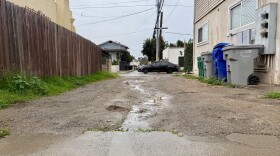Remote work has soared in popularity among San Diego County businesses since the COVID-19 pandemic, a new survey found, but the benefits are mostly going to high-income employees.
The survey was commissioned by the San Diego Association of Governments (SANDAG), the countywide planning agency that's in the midst of developing a new regional transportation plan, and was a follow-up to a similar survey in 2021.
SANDAG found 57% of San Diego County businesses offer a remote work option to at least one of their employees, up from 47% in 2021. But the share of employees who can work remotely is only 39%. That's lower than at the pandemic's peak but still higher than pre-COVID-19 levels.
Cindy Burke, senior director of data science at SANDAG, said jobs that have no remote work options tend to pay lower wages and are more likely to be held by workers who are Black, Latino or under 25 years old. South Bay residents are also less likely to have remote work options than North County residents.
Burke said the findings are critical to SANDAG's development of its 2025 Regional Transportation Plan, which has to include projects and policies that reduce the amount of driving in San Diego County. Cars and trucks are the county's largest source of greenhouse gas emissions.
"We know that public transportation can take twice as long as getting around in a car," Burke said. "We're really trying to take all of these factors into consideration when we're looking at how are getting people around, how are we giving them options, how are we making sure it's equitable."
The long-term impacts of remote work on vehicle travel aren't as big as initially thought. While remote workers may not be driving during rush hour, they are driving more often in the middle of the day, Burke said. And remote workers are increasingly ordering products delivered to their homes, which further increases vehicle travel and offsets the environmental benefits of remote work.
"We also know people are more likely to be driving to do errands, and then still getting the deliveries," Burke said. "I may order one thing from Amazon, but I'm still going to run down to the Target or Walmart to get something else."






